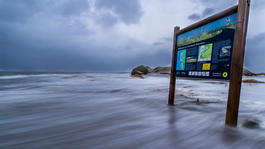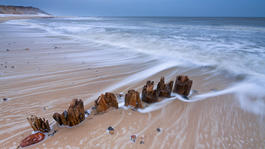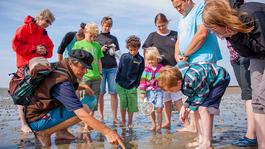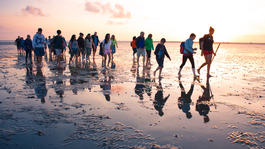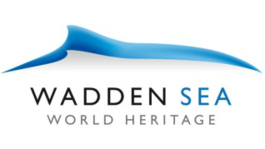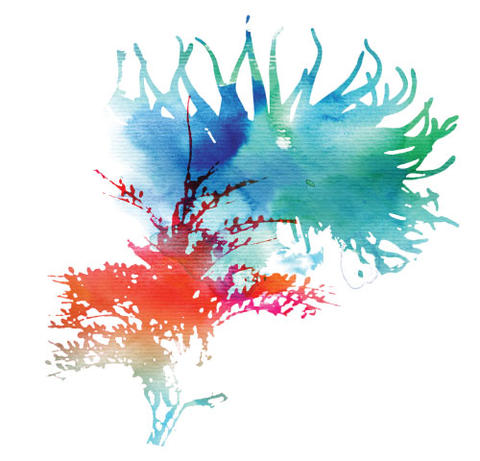






Management
The inscription of the Wadden Sea on the World Heritage List recognises the outstanding global importance of its biodiversity and natural processes, and the need for its long-term protection and management.
Since 1978, Denmark, Germany and the Netherlands have been working together in a Trilateral Cooperation and have achieved a high level of harmonised protection, management and policy, which will also ensure the integrity of the Wadden Sea World Heritage in the future.
Monitoring the Wadden Sea
The trilateral Monitoring and Assessment Programme (TMAP), is the integrated common monitoring programme for the Wadden Sea. Denmark, Germany and The Netherlands, provide harmonised monitoring data for a scientific assessment of the ecosystem through regular Quality Status Reports (QSR).
World Heritage Projects
Recognising the crucial importance of the site for the survival of migratory birds on a global scale, the Wadden Sea Flyway Initiative (WSFI) was launched to strengthen monitoring and capacity building, as well as cooperation with other countries for the conservation of migratory birds, especially along the East Atlantic Flyway.
As tourism may have negative effects on the World Heritage site, the trilateral PROWAD project has developed a transnational strategy, which identifies opportunities and prospects for sustainable tourism in the Wadden Sea, and at the same time gives the tourism sector a role in the protection of the site.
International Cooperation
The Trilateral Cooperation has also established international collaborations with sites which have similar coastal areas such as Korea, West African countries (Wadden Sea Flyway Initiative) and the Wash-Northern Norfolk Coast. The Wadden Sea cooperative actively contributes to the UNESCO Convention and its activities and programmes, specifically to the World Heritage Marine Programme, a network of all 46 marine World Heritage sites.
World Heritage Logo and Brand
The use of the Wadden Sea World Heritage Logo and Brand is jointly managed by the World Heritage state parties of Denmark, Germany and The Netherlands in accordance with the aims and objectives of the UNESCO World Heritage Convention.
